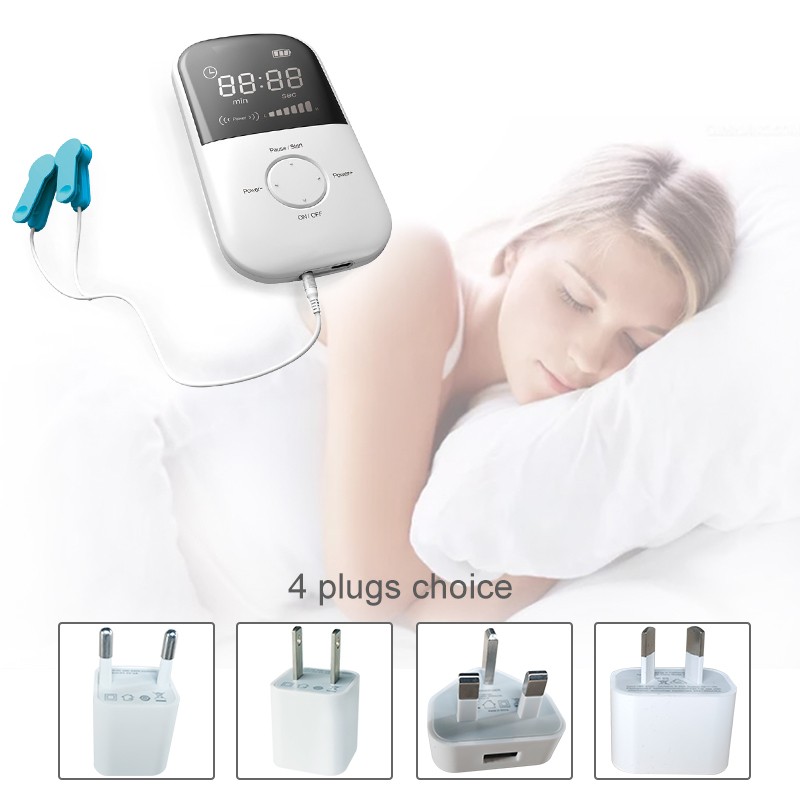Effects of cranial electrotherapy stimulation on resting state Things To Know Before You Buy

Assessment short article A Critical Review of Cranial Electrotherapy Stimulation for Neuromodulation in Clinical and Non-clinical Samples 1 U. S. Army Combat Capabilities Development Command Soldier Center, Cognitive Science Team, Natick, MA, United States 2 Center for Applied Brain and Cognitive Sciences, Tufts University, Medford, MA, United States 3 Department of Psychology, Tufts University, Medford, MA, United States Cranial electrotherapy stimulation (CES) is a neuromodulation tool utilized for alleviating many clinical problems, including sleeplessness, anxiousness, and clinical depression.
Even more just recently, a minimal variety of research studies have examined CES for affecting affect, anatomy, and actions in healthy and balanced, non-clinical samples. In this research study we looked for to examine these impacts in healthy and balanced, non-clinical volunteers, as properly as within-subject experimental conditions and management groups, to determine the efficiency of CES one of healthy and balanced, non-clinical participants in achieving sustained, favorable improvement in body temp. A total of 1,000 individuals were sponsored, and 3,735 participants finished the research study.
The physiological, neurochemical, and metabolic devices rooting CES impacts are currently unidentified. For instance, the effects of an insulin immune stress frequently made use of for dental supplements (B.G.B.N.S.). may change the physiological feedbacks of human beings that have additionally been disclosed in vivo. The results of B.G.B.N.S. on human brain activity have formerly been stated.
Computational modeling advises that power stream conducted with CES at the earlobes can easily get to cortical and subcortical locations at extremely low magnitudes associated along with subthreshold neuromodulatory results, and research studies making use of electroencephalography (EEG) and practical magnetic vibration image resolution (fMRI) reveal some impacts on alpha band EEG task, and inflection of the default method network in the course of CES management.
One idea proposes that CES modulates human brain stem (e.g., medulla), limbic (e.g., thalamus, amygdala), and cortical (e.g., prefrontal cerebral cortex) locations and increases relative parasympathetic to thoughtful ride in the free tense system. The practical and mind correlates of these paths advise that CES regulates or inhibits brainstem feature. However, the neurophysiological mechanisms regulating these pathways are confusing.
There is no straight evidence supporting this concept, but one of its presumptions is that CES may generate its impacts through activating sensory projections of the vagus nerve, which supplies parasympathetic signs to the cardiorespiratory and digestive units. The vagus nerve is the key physical body organ of the limbic or intestinal system. It includes the substantial bulk of natural chemicals that answer to different stimulations outside the tummy and are the underlying mechanism of the pain-producing system.
In our crucial customer review of researches using CES in clinical and non-clinical populaces, we located serious methodological concerns, consisting of potential problems of interest, risk of methodological and analytic prejudices, problems with sham credibility, absence of blinding, and a intense diversification of CES criteria selected and worked with across scientists, laboratories, organizations, and studies. We keep in mind that many researches determined an organization of CES and stress along with the outcome of the scientific trial, others limited to the anxiety subscales.
These limitations create it hard to derive consistent or powerful ideas from the extant literary works, solidifying interest for CES and its capacity to alter nervous system task or actions in meaningful or reputable ways. In other phrases, we wish that it will certainly be important for specialists to develop an evaluation method that makes it possible for them to decipher the proof separately coming from various other studies and for which the outcome has been legitimized by other private detectives, therefore aiding medical professionals a lot better expect their interpretation of the information.
The absence of convincing proof additionally encourage well-designed and fairly high-powered practices to examine how CES might modulate the physiological, affectional, and intellectual feedbacks to tension. The Most Complete Run-Down are typically designed to examine the capacity of various stress factors to affect cognitive efficiency making use of standard procedure designs that are representative of the basic populace. If these style are based on a incredibly little amount of attendees, they might possess bad predictive credibility.
Establishing dependable empirical links between CES administration and human efficiency is important for sustaining its would-be make use of during the course of professional training, operations, or recuperation, ensuring stability and robustness of effects, defining if, when, and in whom such effects could occur, and guaranteeing that any type of benefits of CES surpass the threats of damaging events. Acknowledgments The research and writing was brought out along with the complete support of the Canadian Humanist Association.

Intro Cranial electrotherapy excitement (CES) involves supplying low-intensity (50 μA to 4 mA) power stream through a set of electrodes connected to mutual biological postures around the scalp (e.g., eyelids, earlobes, mastoids, temples), along with the intent of acutely modulating central and/or peripheral worried system task.
